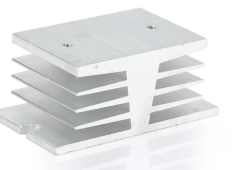Ucatchmydrift
New Member
- Joined
- Jul 2, 2022
- Messages
- 195
Hi, ive just ordered a junctek kg140f.
(400amp version without the lcd screen as will only be using it via Bluetooth)
I noticed on a youtube video someone mentioning that it has relay control based on different situations occuring, such as over or under voltage protection.
I was wondering if anyone has used this function? And if so, do you know if i could use it to switch on an external relay when the battery bank (24v lifepo4) drops to a certain voltage, then switches the relay off when the battery voltage gets to or goes over a certain voltage?
Reason im asking is:
I have an epever all in one inverter that is connected to the grid permanently to allow a pass through function if i run out of battery and there is no solar available, which is great, accept for two things.
1. For some reason it draws a continuous 10w from the grid 24/7. - not much i know, but annoying, so id like to use the relay control to activate a relay/contactors to connect the grid power only when the battery gets low, then disconnect once it has been charged to a certain voltage.
2. All in one inverters seem to draw about 300w when using grid power - this seems crazy, but it does seem to be true (ive checked using a ac clamp meter), and there is another thread on here discussing the issue with growatt all in ones too. - not sure why im stating this, just having a moan. Would just be interesting to know why. Luckily it will only be using grid power at cheap rate overnight in winter. Most of the year it wont be being used at all.
Also, does anyone have the manual for this shunt? As the official link does not work for me...
Thanks ???
(400amp version without the lcd screen as will only be using it via Bluetooth)
I noticed on a youtube video someone mentioning that it has relay control based on different situations occuring, such as over or under voltage protection.
I was wondering if anyone has used this function? And if so, do you know if i could use it to switch on an external relay when the battery bank (24v lifepo4) drops to a certain voltage, then switches the relay off when the battery voltage gets to or goes over a certain voltage?
Reason im asking is:
I have an epever all in one inverter that is connected to the grid permanently to allow a pass through function if i run out of battery and there is no solar available, which is great, accept for two things.
1. For some reason it draws a continuous 10w from the grid 24/7. - not much i know, but annoying, so id like to use the relay control to activate a relay/contactors to connect the grid power only when the battery gets low, then disconnect once it has been charged to a certain voltage.
2. All in one inverters seem to draw about 300w when using grid power - this seems crazy, but it does seem to be true (ive checked using a ac clamp meter), and there is another thread on here discussing the issue with growatt all in ones too. - not sure why im stating this, just having a moan. Would just be interesting to know why. Luckily it will only be using grid power at cheap rate overnight in winter. Most of the year it wont be being used at all.
Also, does anyone have the manual for this shunt? As the official link does not work for me...
Thanks ???




